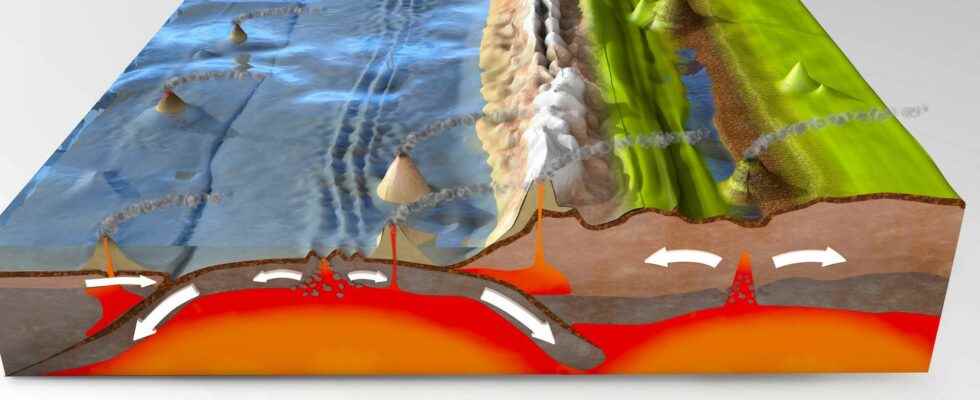Understanding the origin and the processes responsible for Japan’s strong seismicity is essential to protect the inhabitants of this region of the world. In this context, the structure and composition of the upper plate seem to largely influence the generation of powerful earthquakes at the level of the subduction zone.
You will also be interested
[EN VIDÉO] A billion years summarized in 40 seconds: plate tectonics Researchers have modeled the movements of tectonic plates over the past billion years.
Japan is well known to be a high seismic risk region. In question, the presence of a zone of subduction off its coast, which sees the Philippine plate dip beneath the Eurasia plate at the level of the Nankai Trough. Certain characteristics make this subduction zone particularly seismogenic. First, the speed subduction, 4.5 cm/year, which is relatively high. There is also the fact that the Philippine plate is young (between 27 and 15 million years old) and that the geometry of the subduction zone is more complex than for most other tectonic plates. One of the most seismogenic zones is thus located at the level of the peninsula of Kii, where the slope of the slab (the part of the plate sinking into the coat) is particularly important. Throughout history, the Kii Peninsula has experienced many earthquakes of magnitude (Mw) greater than 8.
A huge magmatic intrusion in the Japanese crust
Thanks to the collection of a large amount of seismic dataa team of researchers was able to build a 3D model of the velocity structure of the crust in this region. The results show that the Kii Peninsula sits above a huge seismic velocity anomaly. That anomaly sign of the presence of a high-density intrusive body in the Japanese crust: the Pluto from Kumano. It is an intrusion of magmatic material having crystallized within the crust. The Kumano pluton forms the abutment in front of which the Philippine plate bends to begin its great plunge. A particularly critical area.
The presence of this heterogeneity in the upper plate indeed appears to seriously affect the dynamics of the subduction zone beneath the Kii Peninsula. The pluton, by creating extra thickness in the upper plate and increasing its rigidity, forces the Philippine plate to plunge more steeply. All of these factors could favor the occurrence of mega-earthquakes.
Slab slope, faults and hydration: the ingredients for the generation of powerful earthquakes
Indeed, the greater the slope of the slab, the greater the curvature of the crust at the level of the subduction pit. However, the oceanic crust is not elastic. It is rigid and brittle. Under the effect of the pronounced curvature, numerous faults will develop, thus defining a particularly seismogenic zone. The results of the study show that the faults penetrate very deeply, down to the moho. The presence of these large faults will then allow seawater to infiltrate the crust and reach the upper mantle. However, the rocks of the mantle, the peridotites, are extremely sensitive tohydration. The arrival of water at depth will thus cause an alteration reaction known as serpentinization: the peridotites are transformed into serpentinites, a mineral that is unstable with increasing temperature. The results show that many earthquakes, some of magnitude greater than 7, originate from this altered mantle zone.
The study, published in Nature Geoscience, shows the extent to which lateral variations in the structure of the upper crust, and in particular the presence of major heterogeneities such as the Kumano pluton, control the geometry of the subduction zone and the generation of megaseisms. Until now, the extension and impact of the Kumano Pluton have been largely underestimated. These results will help scientists to assess the real seismic risk of the region, knowing that it will never be possible to predict exactly when, where and how the next earthquake will occur.
Interested in what you just read?
